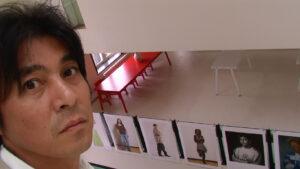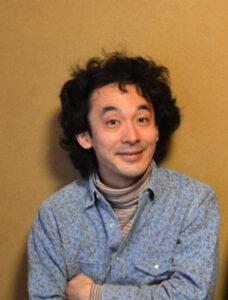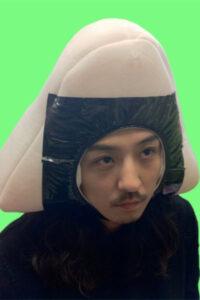“3.11” What is to be remembered? : Japan

“3.11” This digit became a historic sign to be remembered with a specific time and date, March 11, 2011 at 14:26:23. It divided “before” and “after” that specific time. Numerous images reporting the disaster, put all Japanese people into paralysis. What happened at that time? What will begin from now on? Many news and myriad websites, or people who had cameras in his or her hands, tried to grasp complete picture. Direct devastations by the earthquake and tsunami; invisible terror by nuclear power plant accidents; recovery deterred by various problems; repercussions onto atomic energy administration all over the world; the size of the picture petrified us. A tide of scenes and facts that nobody wanted to see nor to know, swept over us. The people who had never spoken appeared on various media. For now, each has his or her own thing to say. There might be things they don’t want to deal with, and facts that they want to hide. Right now, what we need is not just affection and friendliness. Pure sentiment and honesty alone cannot budge this situation. “UNEXPECTED” became a buzz word. An enormous deprivation, that was quite-predictable, gave birth to a chain of sorrow and anger. Where should those sorrow and anger be directed? No, somebody might say pessimistically that a country like ours have no hope anyway. That is also an honest word by Japanese people. The word “EIZOU” was quizzed its meaning more than ever. Every body gasped at watching coarse “EIZOU” that somebody shot with mobile phone. Countless citizens and artists pointed cameras trying to capture the “after” the moment. What on earth can “EIZOU” do? “3.11” program was woven with a straightforward cause. We wanted to ask: what are the independent “EIZOU” artists, like us, were thinking when the earthquake struck us; what have changed to them “before” and “after” that? Hence, these videos were not directed to a unified volition nor political assertion. This program accumulates videos that each artist has experienced during and after the moment.
Iso – Katsuyuki Hattori 3:11 min | 2011
A Few Minutes Later – Hiroaki Sato 3:11 min | 2011
Bye Bye Alfred – Kotaro Tanaka 3:11 min | 2011
The Lake – Aki Nakazawa, Jan Verbeek 3:11 min | 2011
To be announced – Akiko Nakamura 3:11 min | 2011
Don Ska Ban – Naoya Ooe 3:11 min | 2011
Tangram (2011) – Kentaro Taki 3:11 min | 2011
Video Feedback Aleatoric no.1 – Masayuki Kawai 3:11 min | 2011
A Growing Historical Evidence in My Life – Bon Tan Sui 3:11 min | 2011
Voice of Farmland – Eiji Azuma 3:11 min | 2011
Making of Tokyo – Yousuke Sano 3:11 min | 2011
To the Eyes of Sleepless Nights – Yu Shigematsu 3:11 min | 2011
Dot – Youhei Kurozaki 3:11 min | 2011
… ………., –Haruyuk i Ishii 3:11 min | 2011
A Found Beach – Keitaro Oshima 3:11 min | 2011
Commemorative Photos – Maki Satake 3:11 min 2011
Swimming Up from Fukushima Gulf to Home River – Hiroshi Ashikaga 3:11 min | 2011
Hi-Kage – Sayaka Shimada 3:11 min | 2011
Co-curator :

Hiroaki Sato is a video artists, writer, curator and lecturer. He was born in 1962. Working with text, images and especially video art. He is one of the founders of Spread Video Art Project 2 (SVP2). His book, “The Fightin’ Video Camera” was published in 2008. In it, he comments on the contemporary Japanese situation of video art, documentary film, video activism and education. He is currently teaching in Nihon University College of Art Department of Cinema, Tokyo Polytechnic University, Musashi University Department of sociology, Nippon Engineering College.
Co-curator :

Katsuyuki HATTORI – Born Tokyo, Japan, in 1973. He co-founded seminal video art organizations in Tokyo: Spread Videoart Project, art Lab. GOLDENSHIT, and VIDEOART CENTER Tokyo. Exploring various aspects of video art for over 10 years, he creates both representational and non-representational video works. His works are shown in “18. Kasseler Dokumentarfilm-und Videofestes” (2001, Kasseler) “laisle.com video experimental e video arte,” (2003, Rio de Janeiro), “telepidemic! Int.” (2004, Hong Kong), “punto y raya festival 0.2” (2007, Madrid). He was an artist in residence at VIDEO POOL Media Art Center (2007, Winnipeg).
Workshop Artist :

Kotaro Tanaka – Born in Tokyo, Japan in 1979. Filmmaker, VJ(video jocky), Part-time instructor of movie. His works are exhibited in the country and overseas such as Image Forum Festival, International Film Festival Rotterdam and Europian Media Art Festival. His main theme in his works is “Gazing”. He is trying to expand the meaning and the concept of it. Also his theme is how to narrate “stories” without common scripts, by just audio visual. He thinks that he has to try new narrative of cinema and believes that he has what he can do for cinema so much. Website : http://kotarotanaka.net
